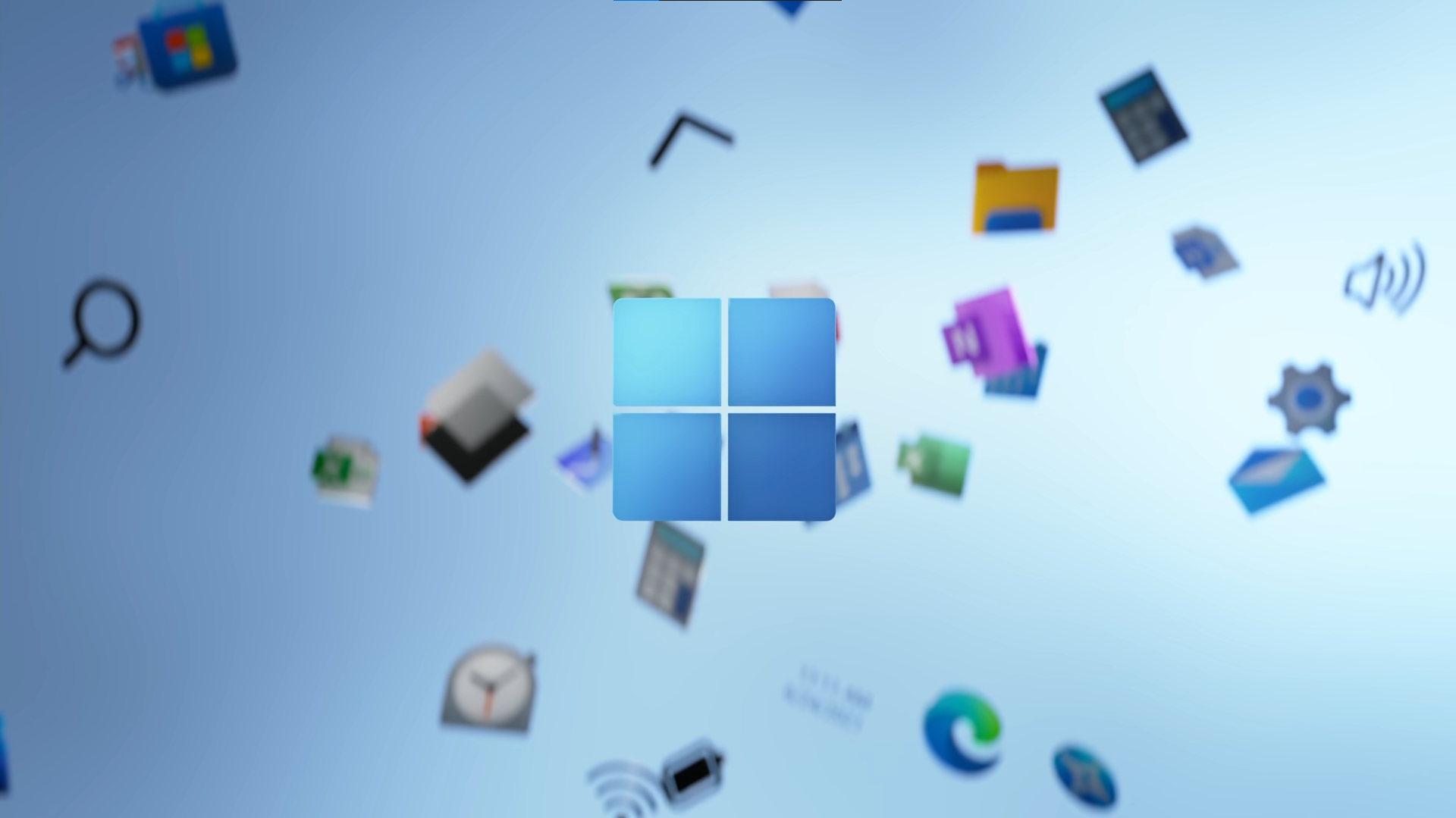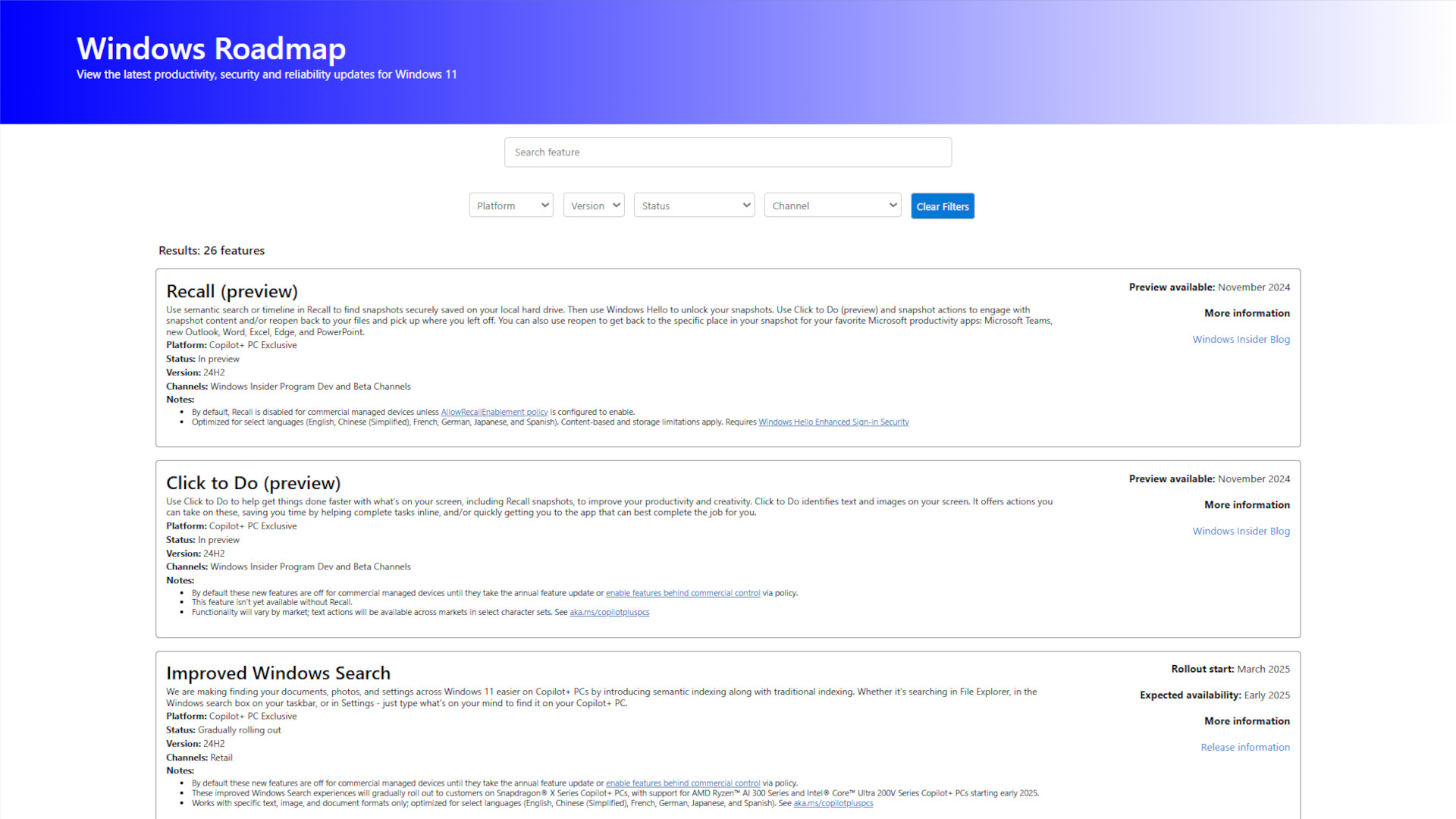
It's all about transparency, according to Microsoft.
While the average Windows user might not really worry about what changes Microsoft has planned for its range of operating systems, system administrators and other IT professionals certainly do. Up to now, though, we’ve all had to make do with keeping an eye on beta channels or blog updates, but now Microsoft has a full roadmap for Windows that anyone can see.
‘Road’ is perhaps a bit of a misnomer, if I’m honest, as it currently doesn’t show anything further in the future than April—which is mere days away—but I suppose calling it a ‘smallstepmap’ would just be a tad confusing.
Top of the roadmap is Recall, Microsoft’s AI-powered system that takes snapshots of your computer and works to make it easier to browse and find content, as well as edit it. The tool has been delayed multiple times due to concerns about privacy and security, but Microsoft clearly isn’t giving up, though the roadmap states that it’s still in preview (i.e., for beta users only).
There are not a whole lot of surprises in the roadmap and many entries are already known about, such as Task Manager being updated to show CPU usage correctly, or they’re already out in the wild. Of the 26 features currently listed, eight of them are exclusively for Copilot+ AI PCs, which are laptops powered by Qualcomm Snapdragon X processor.
As to why Microsoft has gone to the trouble of making this roadmap in the first place, it’s all about improving its transparency about how it plans to change its software. At the moment, the list just covers client PCs running Windows 11 but Microsoft says that it will “consider expanding the roadmap to cover additional areas and device types.”
Any system administrator worth their salt would be keeping a close eye on forthcoming changes to the likes of Windows Server anyway, but adding this information to the roadmap seems like a logical improvement to me.
Even though you’d want to test any update on a separate rig before rolling it out across a network, having some prior, easily accessible information about the whats, whys, and whens has to be a good thing.
One entry in the roadmap that has caught my eye is the ‘Top Cards’ thing, which is supposed to “provide an easy way to view your PC’s key specifications, including processor, RAM, storage, and GPU, helping you quickly understand your PC’s capabilities at a glance.” I’m not sure how different this is going to be from what’s currently shown or whether it’s going to be any more useful than, say, CPU-z or HWInfo64.
It’s a very minor thing but any little quality-of-life improvement is welcome, as is the fact that Microsoft is trying to be more open about what changes it has in store for Windows. Sure, the roadmap could be a lot more comprehensive but it’s a start, at least.
Windows 11 review: What we think of the latest OS.
How to install Windows 11: Guide to a secure install.
Windows 11 TPM requirement: Strict OS security.





